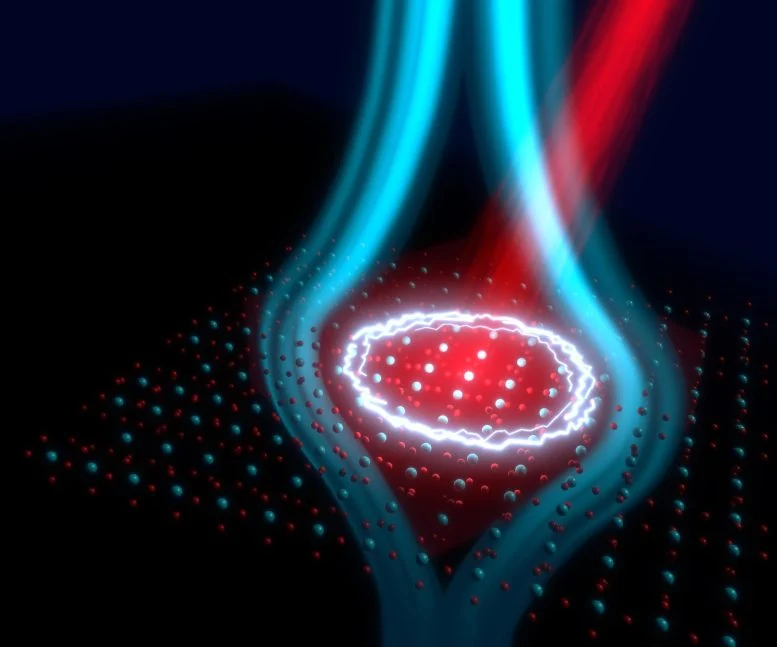"The discovery of wave-like Cooper pairs in Kagome metals introduces a new era in superconductivity research, offering potential for innovative quantum devices and superconducting electronics, driven by theoretical predictions and recent experimental validations. Credit: SciTechDaily.com" (ScitechDaily, Kagome Metals Unlocked: A New Dimension of Superconductivity)
"Superconductivity is a set of physical properties observed in superconductors: materials where electrical resistance vanishes and magnetic fields are expelled from the material. Unlike an ordinary metallic conductor, whose resistance decreases gradually as its temperature is lowered, even down to near absolute zero, a superconductor has a characteristic critical temperature below which the resistance drops abruptly to zero. An electric current through a loop of superconducting wire can persist indefinitely with no power source" (Wikipedia, Superconductivity)
Theoretically, a superconducting electric circuit or antenna can make the perpetual motion machine possible. The superconducting wires can collect so much energy from electromagnetic fields that the system will not need another energy source. The problem with superconducting computers is that the components are hard to control in superconducting conditions.
But laser rays can be used to warm those components in critical positions and the laser rays can switch material from superconducting to resistant and back. The temperature in those critical components than in switches, can be kept near the superconducting and resistant border. The lasers can jump that component between superconducting and resistant states. And that can make superconducting computers possible.
Superconductivity is a key to compact quantum computers. The problem is how to make that thing without great energy use. Room-temperature superconductors are not yet possible. However, the system that includes low-temperature components and lasers that create pressure that stabilizes atoms may make it possible to create a portable quantum computer.
The laser that raises the temperature in the superconducting wires makes it possible to create the superconducting binary computer. The laser system can adjust the temperature in switches and routers. Lasers can remove superconduction. That denies the uncontrollable electricity jump over the switch.
Above: Hall effect. In diagram A, the flat conductor possesses a negative charge on the top (symbolized by the blue color) and a positive charge on the bottom (red color). In B and C, the direction of the electrical and the magnetic fields are changed respectively which switches the polarity of the charges around. In D, both fields change direction simultaneously which results in the same polarity as in diagram A. electrons flat conductor, which serves as a hall element (hall effect sensor) magnet magnetic field power source" (Wikipedia, Hall effect)
1) electrons
2) flat conductor, which serves as a hall element (hall effect sensor)
3) magnet
4) magnetic field
5) power source
(Wikipedia, Hall effect)
That means electrons in the farthest orbitals are far away from the atom's nucleus. The orbitals of those electrons that orbit a very low energy atom can cross the most out electrons orbitals in the other atom. That melts those atom's quantum fields melt to the one entirety. Electricity is the wave movement between electrons in the wire's shell. The resistance or the Hall effect is the standing wave between the atoms or their quantum fields. If those quantum fields are melted together.
That allows the wave to travel across a single homogenous quantum field. Resistance forms when electricity jumps from one quantum field into another. When electricity jumps to another quantum field across the hole. That makes the receiving quantum field oscillate.
But then we can ask what is superconduction. The electricity that flows without resistance is superconduction. At a very low temperature, there is no oscillation in the wire. And that denies the resistance. But there are also more things than just the low temperatures that make wire superconducting. In a very low temperature. The atoms in wires are Bose-Einstein condensate.
That oscillation sends waves back to the direction where electricity came. This thing makes the standing waves that we know as resistance. If there are no holes between quantum fields. And those fields melted into one entirety. That makes those things superconducting.
The standing waves act like Tesla coils and send wave movement to the sides of those wires. Because there are no standing waves, that makes it impossible to eavesdrop from the sides. Radiowaves that travel to the sides of the wire cause energy loss. And standing waves destroy information.
When we think about light-conducted superconduction. That means the laser light will make a similar situation, as low temperature makes in the wires. A laser beam increases the atom's nucleus energy level, which pushes electrons farther from the atom's nucleus. This system turns atoms into conditions. That we could call the high-temperature version of Bose-Einstein condensate.
The problem with room-temperature superconductors is that make the atoms that are large enough a room temperature. The large atom means that the farthest orbital of those atoms' electrons must be enough far away from the atom's nucleus. That allows those atoms to make the chains where the electricity can travel through the homogenous quantum field.
https://scitechdaily.com/kagome-metals-unlocked-a-new-dimension-of-superconductivity/
https://scitechdaily.com/light-induced-superconductivity-a-new-frontier-in-quantum-physics/
https://en.wikipedia.org/wiki/Bose%E2%80%93Einstein_condensate
https://en.wikipedia.org/wiki/Hall_effect
https://en.wikipedia.org/wiki/Superconductivity







No comments:
Post a Comment
Note: Only a member of this blog may post a comment.